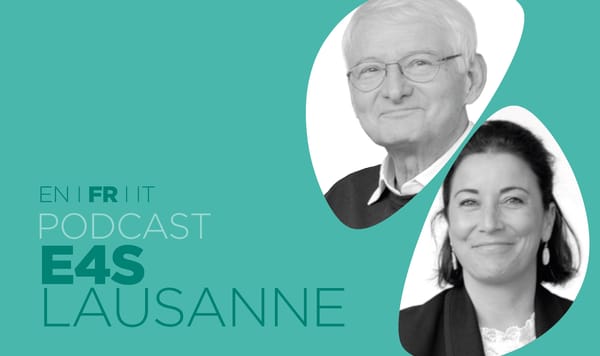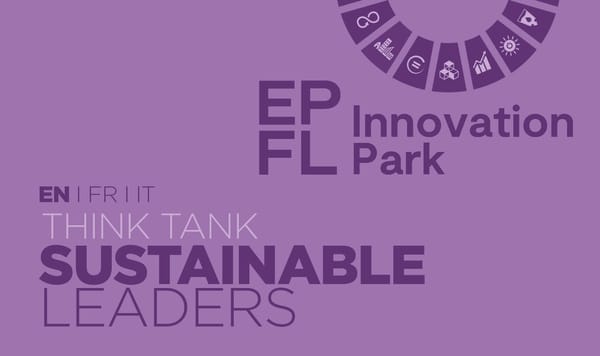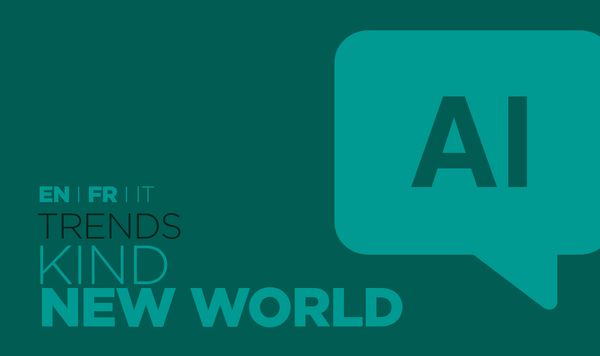KINDNESS & INNOVATION: AN INTIMATE BUT UNEXPECTED RELATIONSHIP
(Italian version here, French version here)
“Full time curious, healthy carrier of kindness” is the way Alessio Cuccu prefers to introduce himself, by quoting the words of one friend of his. Materials Engineer, passionate about Design Thinking, based full time in London, since last year, after spending the previous two years split between London and Venice after more than 15 years working in Italy on innovation research and design.
We, from KINDNESSforBusiness, met him for a short interview about the topic that sparked our curiosity: Kindness – Innovation, which is the basic principle of his new website “Kindnovate – nudge the change”.
How could KINDNESS contribute to Innovation? This was our first question, which found a prompt answer by reading the words on his website, “Innovation is tough because it demands you to change. Change creates frictions and asks you efforts to fix them. Using kindness eases change and facilitate innovation, that is “nudge the change”.
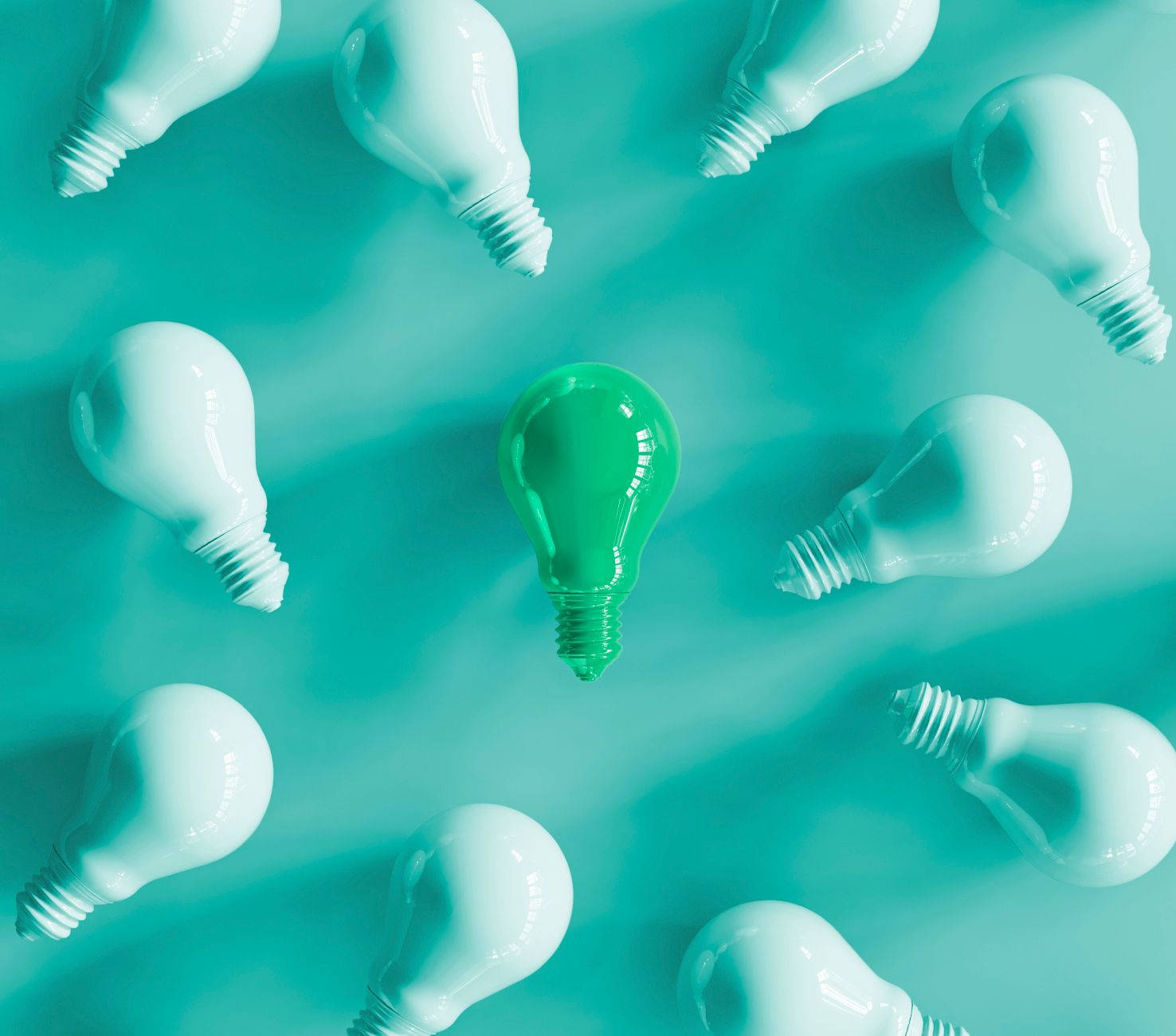
We start, with Alessio, a new series of interviews and meetings about behaviours, values, actions connected to KINDNESS within and for companies.
Good morning Alessio! Please, tell us more about yourself and what you do.
It’s a long, varied, journey and a little bit unusual! I graduated in 2001 with a MSc degree on Materials Engineering with a thesis about “Innovative Materials” which is probably my very first uncommon professional choice. Thanks to my work, a new consultancy company on research and technology transfer, named MaTech, started.
After 8 years of projects, with numerous companies from different fields, I changed job and started to work with Lago Design, an Italian furniture manufacturer design leader, based in close proximity to Padua.
I spent the first four years in Lago inside the R&D team, working on innovative projects, and then I spent the following four years working together with the Head of Design, General Manager being part of the strategic committee.
I’d like to talk about two of the many projects I worked on in Lago; the first one is an example of product innovation, the “Et Voilà” wardrobe, made by substituting wooden doors with a fabric. The second one is a great example of business model innovation, described, in very simple words, “bringing the home outside the home”; the company started using its products designed for homes also for different spaces as offices, hotels, restaurants, hospitals, shops, schools. A deeply transformative project, one of a kind.
After three years spent commuting between Venice and the UK, I joined my wife in London. I followed her and probably that has been one of my small acts of Kindness. Anyway, London is not such a bad place to live in.
Today I can label myself a strategy and innovation consultant: my consultancy projects are always broad thanks to what I have learned during the years. There are few fundamental ingredients for me for doing innovation: sustainability, people’s feelings and building the team and being part of it. I help clients to identify people good at dealing with innovation and I support them to build an effective process for innovation together. I share my experiences, using my favourite methods, first to inspire, subsequently to facilitate the creation of the right mind-set which contributes to better understand innovative issues and helps taking effective, and broad, actions less constrained by previous approaches or the status quo. Time, and being always available (both virtually and physically) contribute to define the best KPI for the company.
How did you end up sharing Kindness for professional purposes, in a professional environment?
When I arrived in London in 2018, I took a sabbatical year; I spent time for myself, learning from the city and connecting the dots from my life experiences. First, I realised that kindness has always been with me, from the very start of my life, and then I had my ha-ha! moment realising how helpful kindess has always been during all my professional experiences connected with innovation. Kindness for innovation has been the starting point of “Kind Innovation” which, during this 2020 pandemic, has turned into the recent “Kindnovate, nudge the change”.
I started to study this topic, because I realised how much effort is needed to make change happen and build innovation; I came across it, for the first time, while I was working with MaTech, where we were a small team to build something new from scratch. You have to spend energy, find time to share goals and create the right commitment. Then you must accept and encourage a very high tolerance to ambiguity. Without kindness it is quite common for someone to say no, or to say how to make things without listening to others; this does not work, we could also reach a goal but it would be actually distant from a relevant innovation.
Innovation sometimes cannot be pursued continuously, because it is a “time consuming” and “mind consuming” activity, with high cost (and high value and return); a few big corporates in the world have the possibility to innovate non-stop. Often in SME time and mind resources are limited and that’s way we should pay big attention on how to use them, by understanding whether we are living a favourable moment for innovation, or whether we are living a moment in which scaling the business, using already developed innovations, is the new priority.
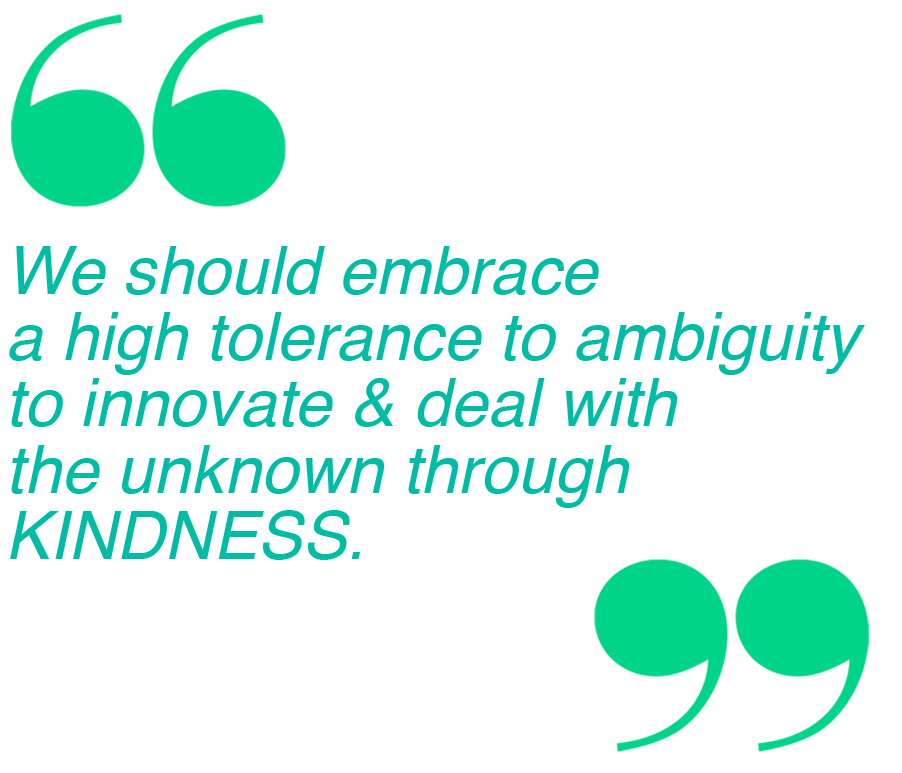
That’s an additional thing, we should discuss about. Lean Manufacturing has taught us that innovation is continuous and incremental. What is your opinion on this and to what extent do you think Kindness could affect it?
By developing innovation step by step, Toyota uses a humble and kind manufacturing process in which all the workers are equally taken into consideration. It is a kind environment, as defined by Robin M. Hogarth in his paper “The two settings of kind and wicked learning environments”. A paper I came across this year in which Hogarth defines the “kind” learning environment vs. the “wicked” ones, where information is not easily shared, because patterns are not obvious or repeating and rules are unclear; here, learning is far from simply repeating the same discernable pattern, in a better way.
In the former environment, you know what you are expected to do, what you are doing today is very similar to what you did yesterday and quite the same of what you are going to do tomorrow; standard deviations are actually low. Everything changes when previously defined rules disappear, when you are looking how to change your approach of doing things, and of thinking, so you realise that being humble and forgetting your knowledge and experiences on purpose, could help. Emptiness generates space, as they say in Asia. Not everyone has the strength, the mind-set and the ability to accept ambiguity. Kindness is extremely helpful when dealing with the unknown.
This contraposition between “Kind” and “Wicked” environments is very interesting. Which other experiences, and readings inspired you?
Concerning the topic mentioned above, I would like to mention the book “Range. Why generalists triumph in a specialized world” by D. Epstein. A generalist is not a “Know-it-all" person, a generalist is more like having the right “mind-set” to welcome unexpected and meaningful connections between different expertise and experiences without sticking to their guns. Experts should transform into facilitators, using the closest common and understandable language to spark collaboration and improve knowledge within the team. The best 'super experts’ when put outside of their “kind” environment could find themselves competing together in an unkind way. Generalists are becoming more relevant in today’s world, a world full of challenges in “wicked” learning environments, which demands a combination of experiences, knowledge, methods, processes from different fields to fix problems by imagining and developing new, innovative and effective solutions. This topic resonates so much with me that I designed a simple 2x2-matrix tool to show where Kind Innovation can make a big difference; I use it to better understand the playground where a company is playing and the starting point to each innovative project.
The second reference I am sharing is another one from Japan, as Toyota; Honda, the smaller Japanese car manufacturer, has a peculiar way to lead meetings between colleagues with different seniority and from different units to solve problems and generate ideas together. I discovered, in the book “Driving Honda” by J. Rothfeder, that they call such meetings “Waigaya”, wai-ga-ya, “the noise of heated discussion and the free flow of ideas”. Hierarchies are left out of the room where “chaotic communication, open disagreement, inharmonious decision making” happen in a truthful, authentic, effective and kind way.
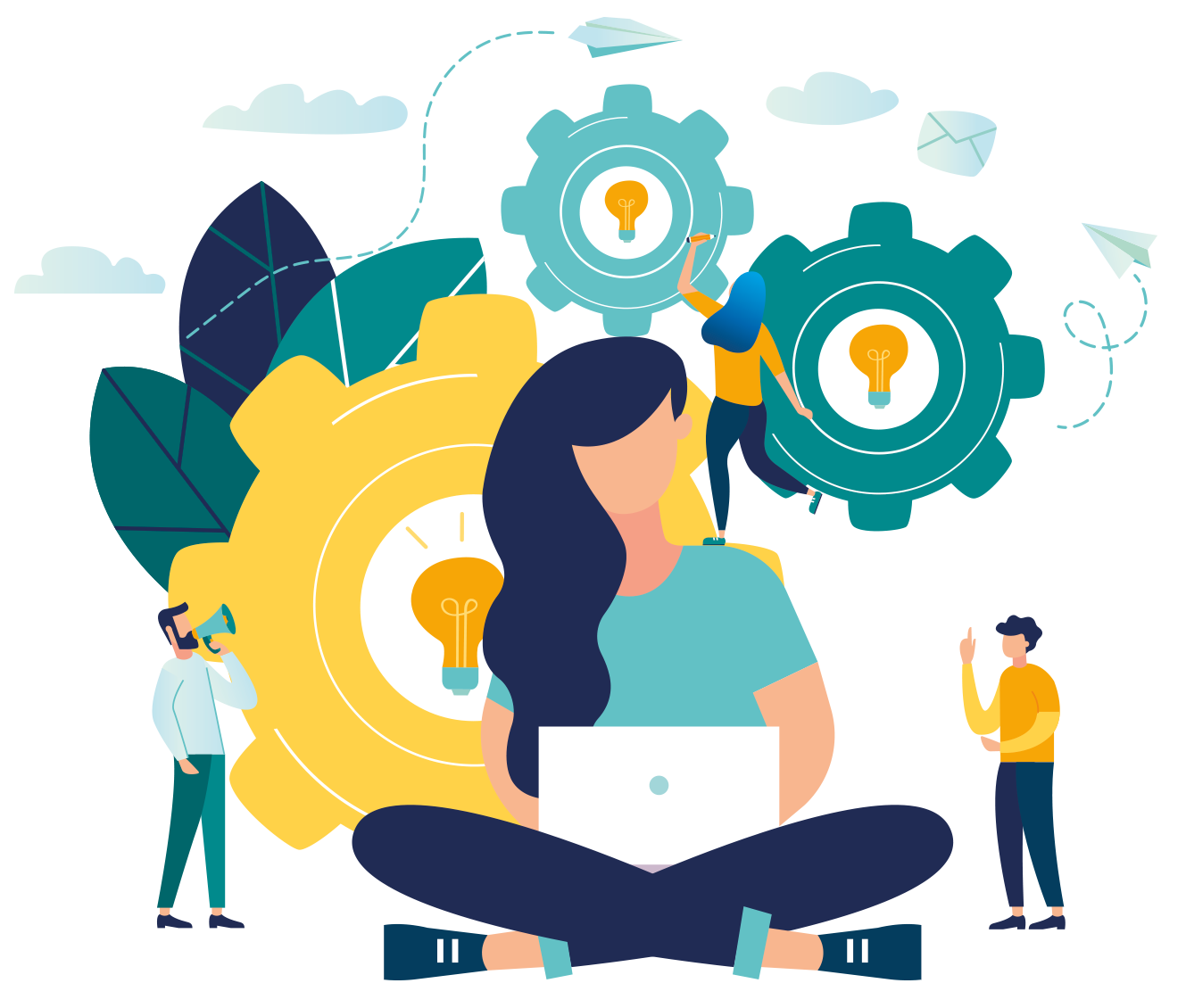
Dupont, a hierarchical company, has a similar way of leading creativity, by contemplating a sort of “creative bubble”, the same just described by you above, where hierarchy is left outside of the bubble; Gore, a former DuPont employee, developed the Gore-tex material, and decided that his new company had to be 100% centered around it.
This is so true, and this brings me now to mind Sathya Nadella, Microsoft’s CEO. In a certain way, he used kindness to change the big tech company after many years where former CEO Steve Ballmer played the “finite game” focusing on competition and competitors’ war. I read that Nadella, newly appointed as the new CEO, handed each of his execs the book “Non Violent Communication” by Marshall B. Rosenberg before starting to build the future Microsoft. He is an Indian, and he reminds us about the different approach they have in Asia. Considering this, we could probably find new sound approaches to innovation in other places such as Africa or South America. Innovators are great in finding kind and inspiring experiences.
So, Kindness works as your “fil rouge” for innovation, because it eases inclusion and inclusion gives a strong and transformative power to innovation. Does a limit to kindness exist in a company?
I believe that inside a company, it becomes important to better understand the context, and Netflix is an enlighting example. First, start by identifying your operation people (execution) and your creative people (exploration). When you are dealing with execution, things should be made in a specific way, the tolerance for ambiguity is not needed, and the company proves itself to be kind by choosing its employees for doing the job in which they are experts, without asking them to diverge or following something new. It is extremely important to understand the difference between an executive and an explorative environment, and then choose the right persons to avoid disengagement. From what I read recently about Netflix and from my past experiences, I learned that people are not all interested in doing explorative and propositive tasks, and that the kindest act is to ask. Sometimes we make big efforts by forcing everyone to jump in the same boat and this could be an unkind and counterproductive choice.
People often ask me what it does mean to be a Chief Kindness Officer. Probably because, at a glance, the first things that pop to someone’s mind, related to kindness are not particularly pleasant: people often tend to make negative connotations to boredom and the weakness of being kind. Sharing Kindness in every company should trigger a paradigm shift: from the common “Mors tua, vita mea” to the new “Vita tua, vita mea”, as I learned from a friend of mine who works as a solicitor.
You are Italian, now living in London. Cross culture is one relevant topic of your job, which we like to highlight because we, K4B, were also born from mixing many different cultures. Do you feel differences, about understanding Kindness, between Italy and London?
Covid-19 is a big, and new, challenge for all of us, which is forcing us to live, for long, in an ambiguous and discontinuous world, never experienced before. During this pandemic, here in London, I’ve observed how many kind initiatives, projects, companies, no-profit, events were born; it’s not by chance. People understand that kindness is extremely useful when tackling a complex situation. Yes, I am under the impression that there are some differences between the two cultures but I have not collected enough information to come to a conclusion yet, the Work is still in progress.
Now that our interview has come to and end, we kindly ask you to choose two cards from the 50 we designed to represent the Kindness Universe of a company; 50 cards to identify all of the shades that constitute the DNA of a company. Please, choose the one which resonates more with you together with the most unexpected one.
The first card that intrigues me is the “Abundance” card; I find it interesting because, most of the times, a very important ingredient to help creativity and innovation to happen is “constraints”, which is something closely related to “scarcity”. The one that resonates more with me is “Authenticity” because it is strictly connected with being kind first to ourselves, without masks. Being happy and helpful are all different components of Kindness.
THE AUTHOR
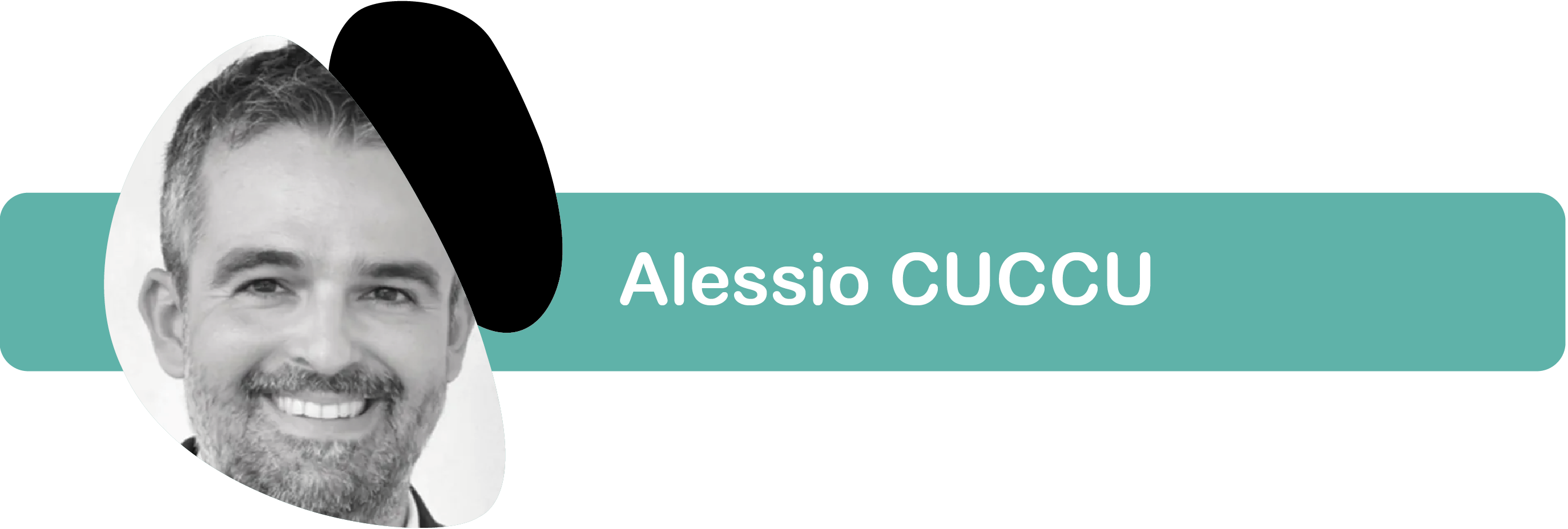
Alessio CUCCU is : Chief Kindness Officer | Full time curious | natural carrier of kindness | inspired by inspiring #KINDINNOVATION.
KINDNESS E INNOVAZIONE: UNA RELAZIONE FORTE QUANTO INASPETTATA
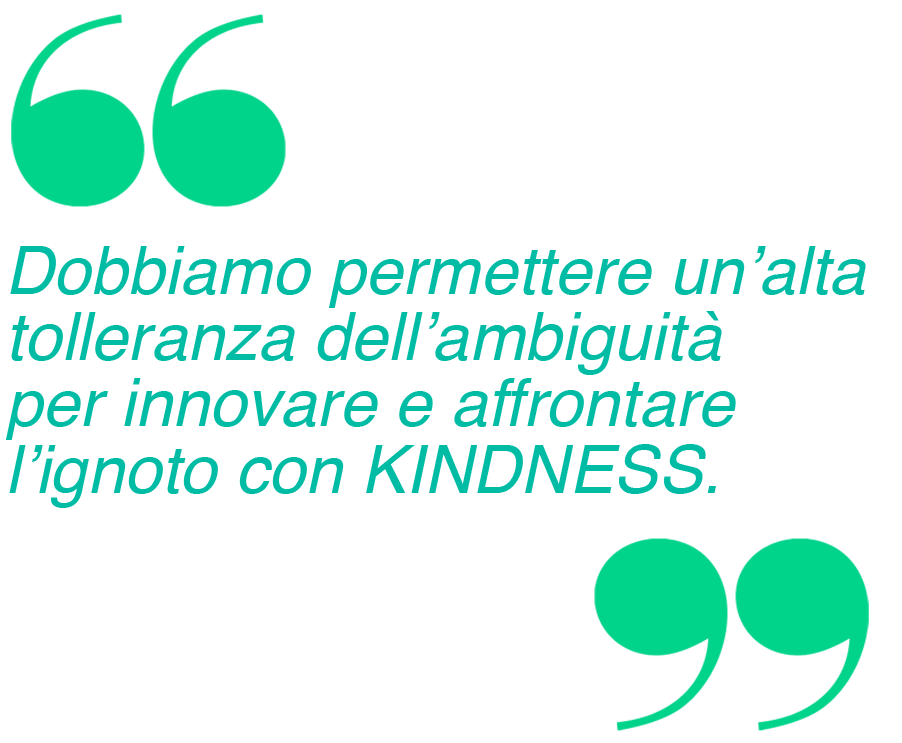
"Curioso a tempo indeterminato, portatore sano di gentilezza" così ama descriversi Alessio Cuccu, citando le parole di un suo amico in cui si rispecchia pienamente. Ingegnere dei materiali , appassionato di design thinking, l’ultimo anno passato interamente a Londra dopo aver speso i due precedenti tra Londra e Venezia ed essersi occupato per oltre15 anni di innovazione, design e ricerca in Italia. Lo incontriamo, noi di KINDNESSforBusiness, per intervistarlo, incuriositi dall’abbinamento Kindness – Innovation, che è alla base della sua proposta e del suo sito “Kindnovate – nudge the change”.
Come contribuisce la gentilezza all’innovazione? Ci siamo chiesti subito e le parole sul suo sito ci spingono ad approfondire. Ogni innovazione porta con sé un cambiamento da affrontare; ogni cambiamento, grande o piccolo che sia, genera delle frizioni che necessitano di impegno e sforzo affinché vengano superate e risolte. Uso la gentilezza per facilitare i progetti innovativi, per questo “nudge the change”, una spinta gentile per il cambiamento.
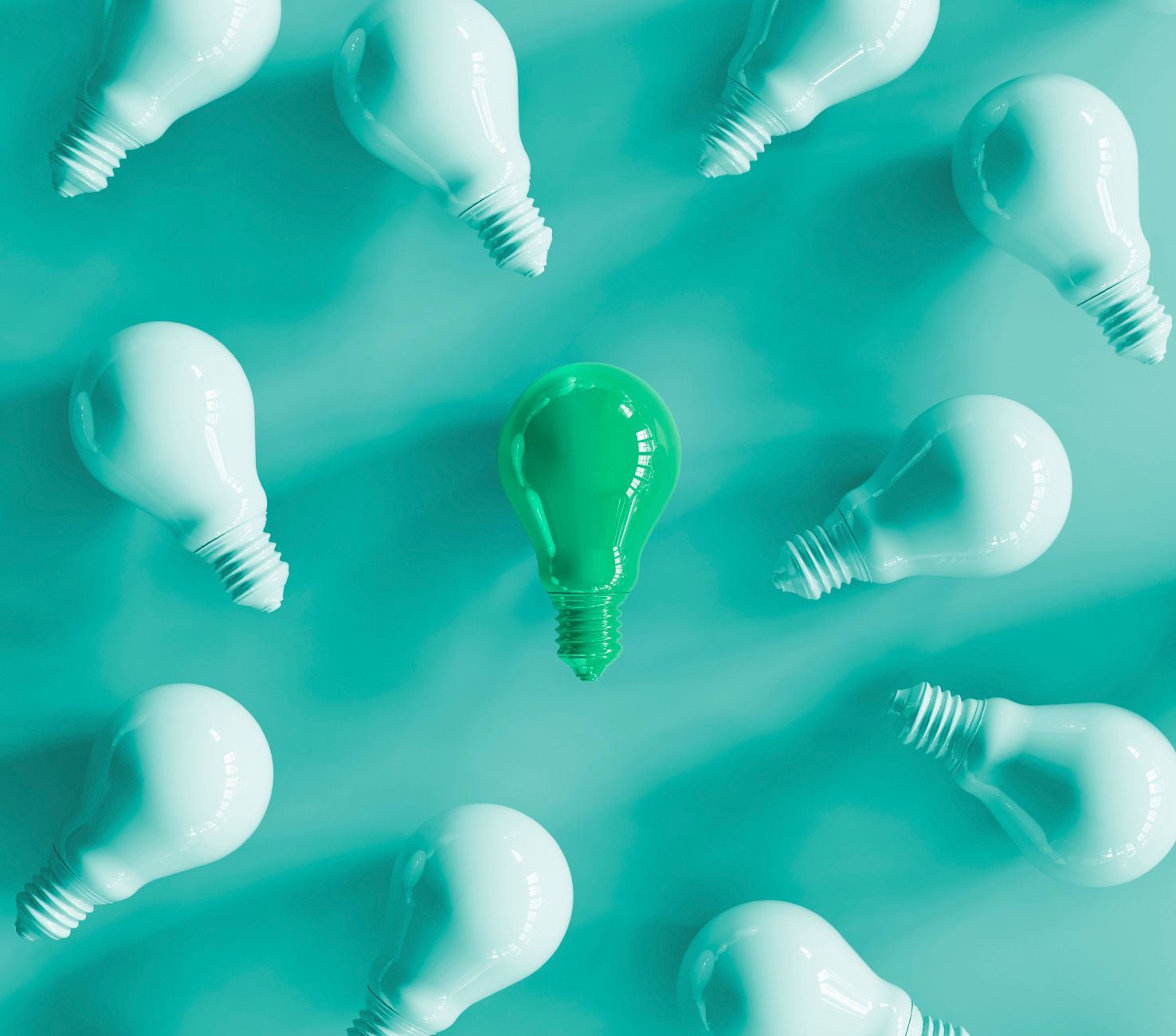
Con Alessio diamo inizio a un ciclo di interviste, incontri di approfondimento su temi, valori e pratiche correlate al tema della gentilezza nelle organizzazioni in senso lato.
Alessio buongiorno! Ci parli del tuo percorso? Ci racconti cosa fai?
Il mio percorso è lungo, variegato e non proprio comune! Mi sono laureato come ingegnere dei materiali nel 2001, già nella tesi avevo scelto un tema non comune: i materiali innovativi. Da cui poi è nata una attività di consulenza che si è concretizzata in una start up di ingegneria dedita alla ricerca e al trasferimento tecnologico dei materiali innovativi, MaTech. Dopo 8 anni di consulenza alle imprese, sono entrato in Lago S.p.A., l’azienda di Padova che produce mobili di design; nei primi quattro ho partecipato con il team R&D, allo sviluppo di molti progetti innovativi, poi, negli anni a seguire ho collaborato in affiancamento al Chief Design e Direzione Generale nel comitato strategico. Dei tanti bei progetti seguiti in Lago, amo sempre ricordarne due; il primo è legato all’innovazione di prodotto, ed è l’armadio “Et Voilà”, un “armadio in tessuto”; il secondo progetto è invece legato ad un’innovazione del modello di business e veniva descritto sinteticamente con la frase “portare la casa, fuori dalla casa”; il limite imposto dalle mura domestiche è stato superato portando l’atmosfera di casa negli uffici, negli alberghi, nei ristoranti, nelle scuole, negli ospedali.; un progetto trasformativo, veramente innovativo.
Poi, dopo tre anni come pendolare tra il Veneto e Londra ho deciso di raggiungere mia moglie che aveva trovato là un super lavoro. Così ho fatto la scelta di seguirla. Diciamo che è stato un atto concreto di Kindness! Mi sono mosso io. Peraltro venivo a Londra, non è che mi andasse male…
Oggi faccio consulenza in senso allargato. Sono un consulente di innovazione ma ho scoperto negli anni, con l’esperienza sul campo, l’importanza di alcuni ingredienti indispensabili all'innovazione: la sostenibilità ambientale, le persone e la costruzione dei team.
L’azienda si confronta con me sulla parte delle risorse umane e dei processi, uso le mie ricerche sugli strumenti di innovazione e le mie esperienze sul tema per facilitare prima la comprensione e poi la creazione di un mindset fertile per l’innovazione e innescare così le azioni efficaci al far sì che l’innovazione non venga limitata da prese di posizione e/o modi di fare consolidati nel tempo. Dedico tempo e presenza per definire i parametri utili per il bene dell’azienda.
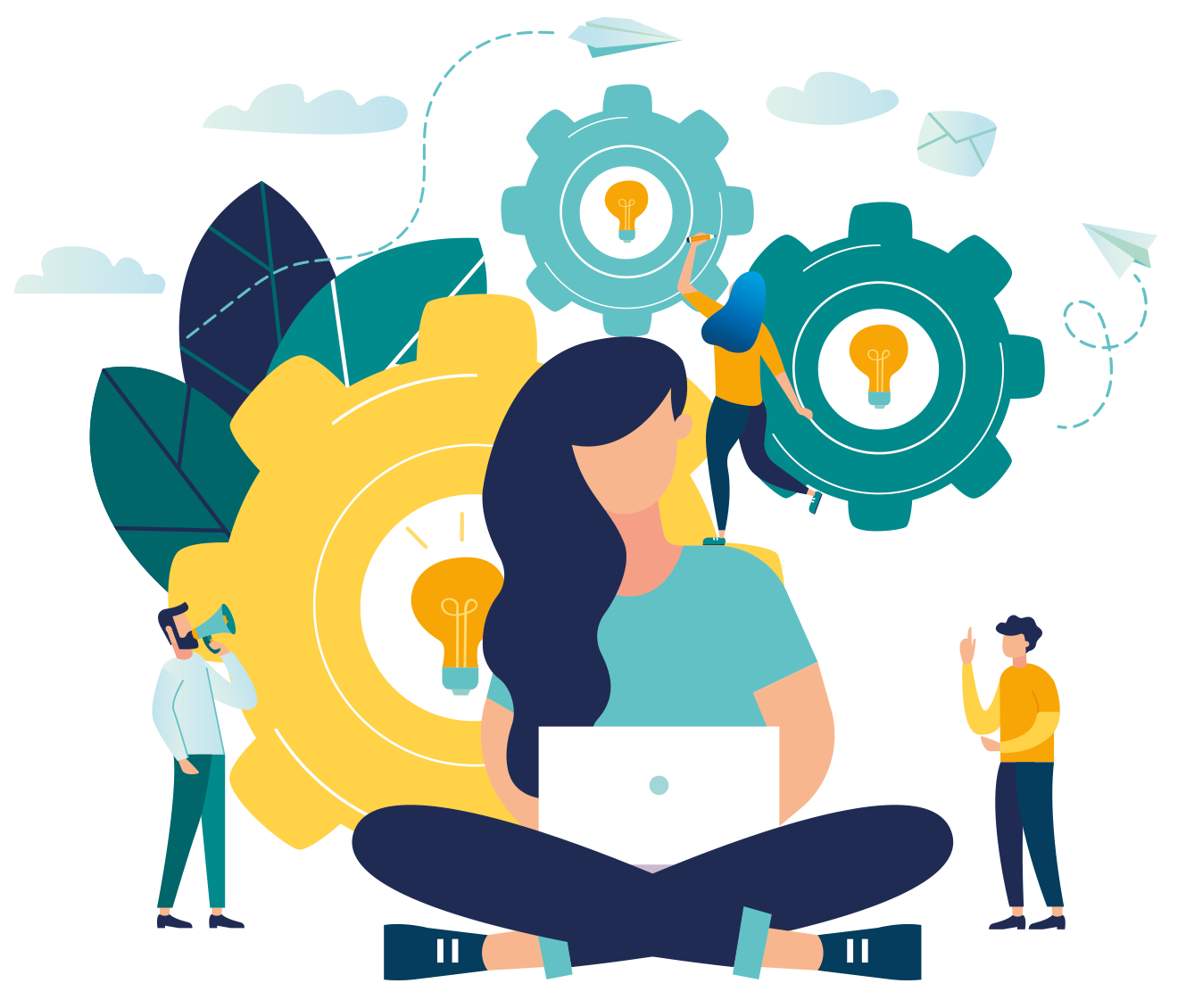
Come sei arrivato a diffondere la KINDNESS nell’ambiente professionale?
Quando mi sono trasferito a Londra nel 2018 ho fatto un anno sabbatico in cui ho connesso molti puntini che facevano parte del mio vissuto. Ho riconosciuto che la gentilezza facesse parte di me e ho messo a fuoco il mio angolo di visuale specifico: la gentilezza per l’innovazione. Così è nato “Kind Innovation” prima, diventato “Kindnovate, nudge the change” in questo 2020.
Ho iniziato a studiare e ad approfondire il tema. Nasce dalla considerazione che l’innovazione è un cambiamento e richiede sforzo, l’ho imparato in MaTech dove eravamo in pochi e dovevamo costruire qualcosa di nuovo. Bisogna metterci energia, impegno, tempo, darsi degli obiettivi, trovare il tempo per pensarli, condividerli. Devi soprattutto accettare l’ambiguità del “nuovo” con una grande tolleranza, per portare i risultati. Nell’innovazione, se non c’è gentilezza si fa presto ad avere uno che dice cosa fare e gli altri devono eseguire e basta. E questo non funziona, si arriverà anche a un risultato ma non ad una innovazione rilevante. L’innovazione poi non sempre riesce ad essere continua, perché è un’attività “time consuming” e “mind consuming”; sono poche le aziende al mondo che possono permettersi di innovare senza soluzione di continuità, e il più delle volte si tratta di grandi aziende Corporate; nelle PMI le risorse time e mind sono limitate e per questo occorre capire quando si sta attraversando un momento fertile, da sfruttare per l’innovazione e quando si è in un momento di consolidamento del business, delle innovazioni già sviluppate in precedenza.
Ecco questo è un punto da approfondire, la Lean ci porterebbe a pensare che l’innovazione sia continua e incrementale. Tu cosa ne pensi e come incide su questo la gentilezza?
Toyota nel portare avanti piccoli step incrementali si muove nel manufacturing in modo umile e gentile, l’operaio viene ascoltato, è paritario. E’ un mondo kind come lo definisce Robin M. Hogarth nel suo paper, studiato in questo anno, “The two settings of kind and wicked learning environments” in cui definisce gli ambienti gentili di apprendimento (kind learning environments) e in contrapposizione gli ambienti “wicked” malvagi, in cui le informazioni non circolano facilmente e l’apprendimento va scoperto, non deriva dalla semplice ripetizione di un’esperienza.
Nel primo tipo di ambiente tu sai cosa devi fare, quello che fai oggi è identico o molto simile a quanto fatto ieri e a quanto farai domani; le deviazioni dallo standard sono limitate. La crisi viene quando non ci sono più regole, quando per innovare bisogna cambiare i modi di procedere, usare l’umiltà di liberarsi della super conoscenza, essere capaci di pensare, e di pensare che non sai niente anche se sei un super esperto. Come dicono gli orientali è il vuoto che fa lo spazio.Ma non tutti hanno voglia, capacità e “mindset” per farlo, per accettare l’ambiguità. La Kindness ci aiuta nel muoverci e affrontare l’ignoto.
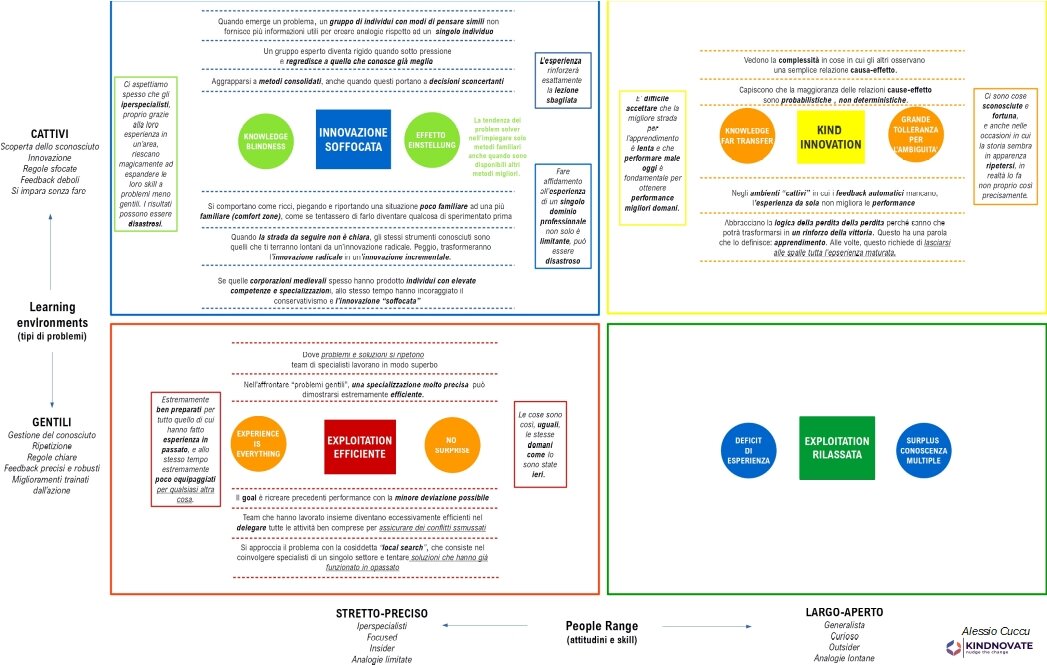
Molto interessante questa polarità fra ambienti gentili e ambienti “malvagi”. Ci sono altre letture o esperienze da cui hai tratto ispirazione?
Collegato al tema che stavo accennando, senz’altro il libro Range. Why generalists triumph in a specialized world di D. Epstein sulle figure generaliste. Il generalista non è il tuttologo, è quasi un mindset, per attivare connessioni sensate non posso essere rigido sulla mia specializzazione. L’esperto deve essere facilitatore, cercare un linguaggio comune e sviluppare le conoscenze del gruppo. Il mondo dei super esperti che magari fanno a gara fra loro non è un mondo kind. Il generalista è più rilevante nella società attuale perché la natura “wicked” dei problemi del mondo moderno richiede esperienza e conoscenza di connessione di elementi provenienti da campi diversi per trovare soluzioni innovative.
E’ un tema che mi ha molto colpito e fra i miei strumenti ho creato ed uso una matrice che mette insieme gli ambienti kind o wicked da un lato e dall’altro le persone generaliste o esperte. Mi aiuta a capire il punto di partenza dell’organizzazione per affrontare l’innovazione (v. immagini matrice).
Altra fonte di ispirazione, sempre giapponese e un po’ contrapposta a Toyota, è Honda che organizza dei momenti creativi dove un senior si chiude in una stanza con tanti giovani per risolvere un problema, anzi per generare idee. Se ne parla nel libro “Driving Honda” che è veramente un bel libro. Le hanno chiamate “Waigaya”, dal suono di tante persone che parlano animatamente in un flusso generativo di idee. La gerarchia è fuori dalla porta e il confronto, anche quando acceso, riesce ad essere autentico, sentito, privo di sovrastrutture, efficace e “gentile”.
Lo facevano anche in Dupont, azienda gerarchica ma che per la fase creativa prevedeva queste “bolle creative” di cui parli, in cui la gerarchia era lasciata fuori dalla porta, tanto è vero che Gore, creando Gore-tex, decide che deve essere una caratteristica di tutta l’azienda
Si infatti e posso anche nominare Sathya Nadella, il CEO di Microsoft. Lui usa la gentilezza per cambiare l’azienda dall’interno, dopo Steve Ballmer che giocava sul piano della competizione e della guerra ai concorrenti. Appena nominato CEO, Nadella dicono abbia regalato a tutti i suoi primi livelli il libro di Marshall Rosenberg sulla comunicazione non violenta, prima di partire a impostare la Microsoft del futuro. Anche lui un orientale, di origini indiane. Torna questa differente impostazione che viene dall’oriente, ma spunti di innovazione vengono anche dall’Africa, dal Sudamerica. Tutti questi sono ambienti kind di ispirazione. Gli innovatori vanno anche a cercarsele le esperienze ispirative.
Quindi la Kindness è il “fil rouge” della tua concezione dell’innovazione nel senso che favorisce l’inclusione, per una maggiore ricchezza e portata trasformativa dell’innovazione. Ma esiste un limite secondo te alla gentilezza in azienda?
Credo che in contesto aziendale sia importante dividere le cose. Il caso Netflix è indicativo. Bisogna distinguere fra le tue risorse operative e le tue risorse creative. In contesto operativo sai che le cose vanno fatte in dato modo. Lì non c’è bisogno di una grande tolleranza verso l’ambiguità, è gentile l’azienda che usa la specializzazione sulla tematica, senza mettere in difficoltà le persone su tematiche nuove. È fondamentale riconoscere l’ambiente e le persone per evitare che soffrano. Netflix dice che non tutti hanno voglia di essere propositivi ed è gentile chiederlo. A volte si fa fatica a voler portare tutti sulla barca e non è più gentile.
A volte mi chiedono cosa vuol dire impersonare una sorta di Chief kindness officer. Ed è difficile affrontare la gentilezza in azienda perché fa emergere tante immagini negative, la gentilezza come noiosa o come debolezza o comunque perdente nel business. Quindi l’apporto della diffusione in azienda della gentilezza dovrebbe portare uno shift di paradigma da “Mors tua vita mea” a “Vita tua Vita mea”. La versione latina aulica del Win-win.
Sei italiano e vivi a Londra. L’interculturalità è un altro aspetto del tuo lavoro che ci piace sottolineare dato che anche noi in K4B nasciamo interculturali. Hai percepito diverse accezioni della Kindness fra l’Italia e Londra?
Il Covid sta mettendo la gente alla prova in un mondo ambiguo e non continuo.In questo anno sono nate tante iniziative, società, non profit legata alla gentilezza. E non è un caso. La gente capisce che per affrontare seriamente una situazione complessa serve la gentilezza. Percepisco delle differenze culturali ma è ancora presto per esprimermi. Direi “lavoro ancora in corso” ma una cosa certa è che in azienda puoi scegliere. Il Covid non ti concede di scegliere.
Per concludere ti proponiamo di scegliere due carte nel mazzo di circa 50 carte che abbiamo creato per rappresentare il KINDNESS Universe di una organizzazione, ossia tutte le diverse accezioni della gentilezza che sono parte del DNA dell’organizzazione, ti proponiamo di sceglierne una che ti risuona molto e una che ti sorprende, che non ti aspetteresti.
Tra tutte quelle che avete selezionato sono incuriosito della carta “Abbondanza”, la trovo interessante anche se per l’innovazione a volte è più efficace avere dei limiti per sviluppare la creatività. Pensandoci quella in cui mi ritrovo di più è la carta “Autenticità” perché la collego anche all’essere gentili verso sé stessi, a non indossare una maschera. E la collego alla felicità e al sentirsi utili, tutti aspetti della kindness.
L'AUTORE

Alessio CUCCU is : Chief Kindness Officer | Full time curious | natural carrier of kindness | inspired by inspiring #KINDINNOVATION.
KINDNESS ET INNOVATION : UNE RELATION EVIDENTE ET POURTANT INATTENDUE
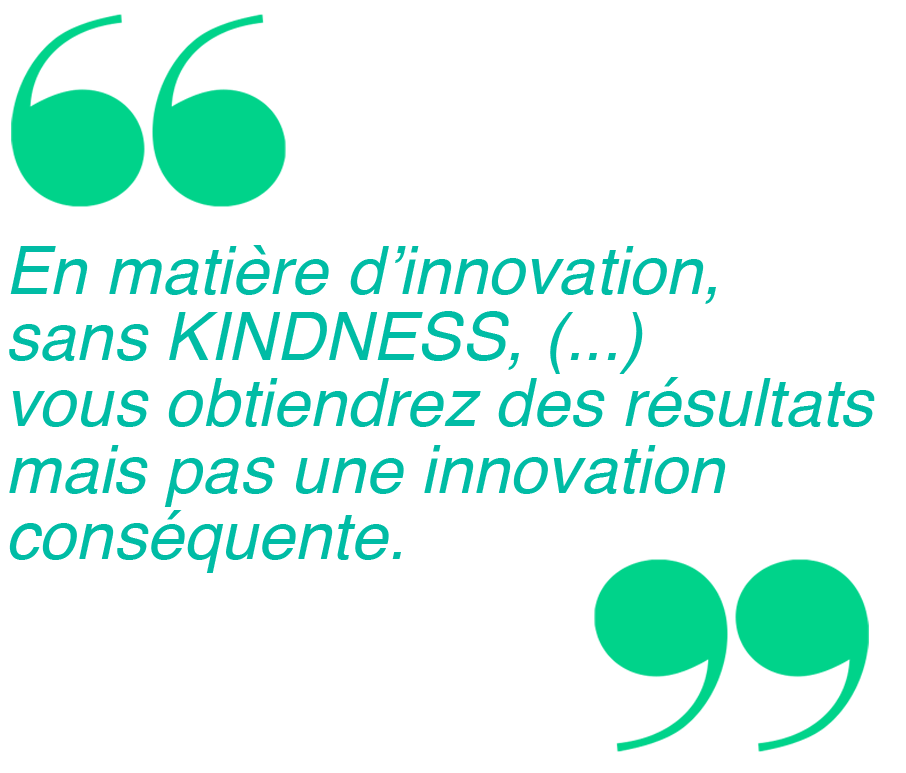
« Curieux à temps indéterminé et porteur de gentillesse » c'est ainsi qu'Alessio Cuccu se décrit reprenant les mots d'un de ses amis dans lesquels il se retrouve pleinement. Ingénieur matériaux de formation et passionné par le design thinking, Alessio vit à Londres depuis environ trois ans et s'implique dans l'innovation et la recherche depuis 20 ans. L’équipe de KINDNESSforBusiness l’a rencontré, intriguée par la combinaison Kindness et Innovation qui à la base de sa proposition et de son site internet « Kindnovate – nudge the change ».
Comment la gentillesse contribue-t-elle à l’innovation ? Une question que nous nous sommes posée, et que les réflexions d’Alessio Cuccu nous incite à approfondir. « Chaque innovation apporte un changement à affronter ; chaque changement petit ou grand génère des ruptures qui nécessitent des efforts et de l’engagement pour être surmontées et résolues. J'utilise la gentillesse pour faciliter des projets innovants, d’où « nudge the change », comme un coup de pouce gentil en faveur du changement.
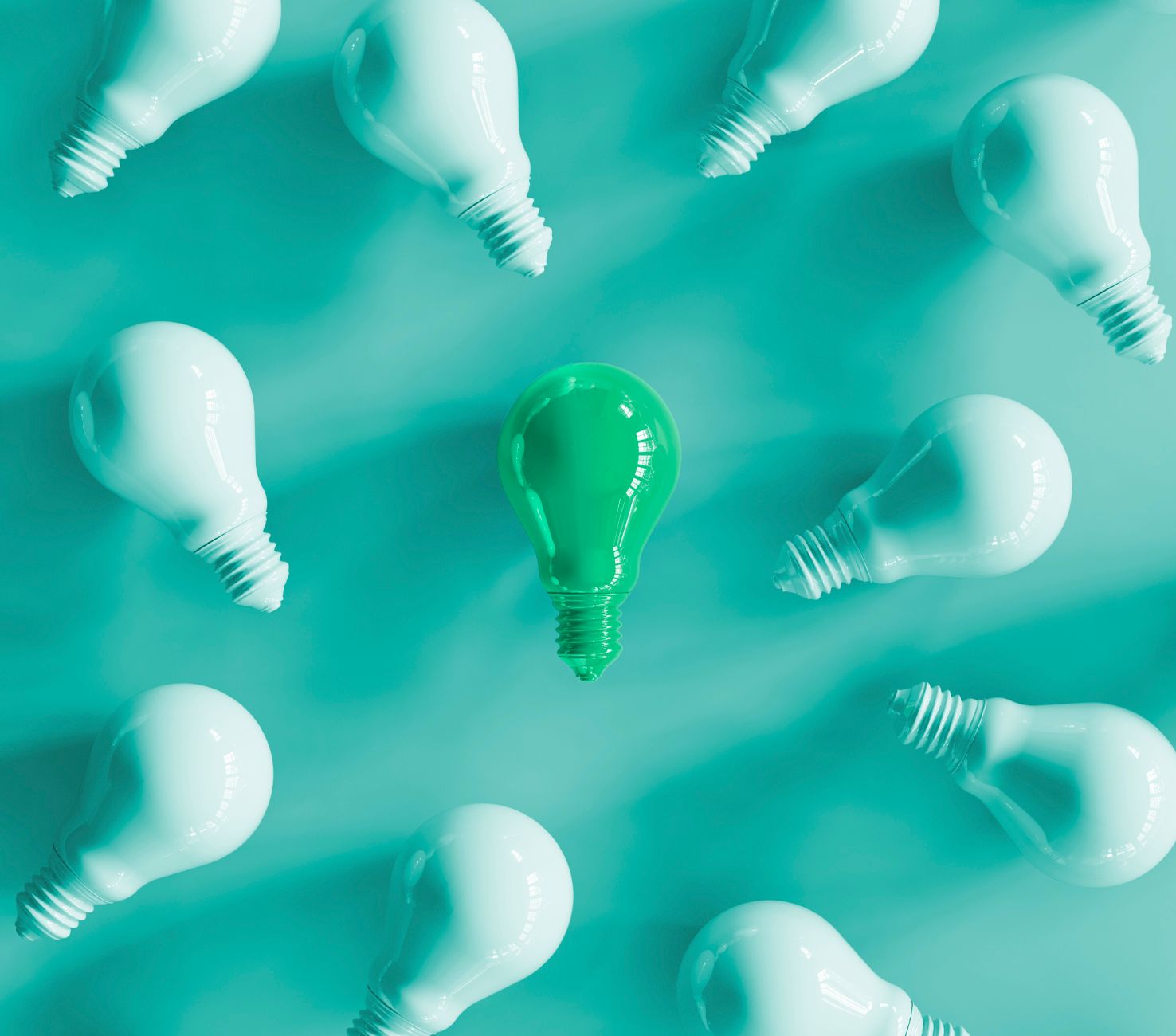
Avec Alessio, nous innovons ainsi un cycle d'interviews et de rencontres d’approfondissement sur des problématiques, des valeurs et des pratiques liées au thème de la KINDNESS dans les organisations au sens large.
Alessio bonjour ! Pouvez-vous nous parler de votre parcours ? Pouvez-vous nous dire ce que vous faites ?
Mon parcours est un peu long ! Je suis né comme ingénieur matériaux en 2001. Pour ma thèse, j'avais déjà choisi un thème sur les matériaux innovants qui est à l’origine de mon activité de conseil qui a abouti à la création de Matec, une start-up d'ingénierie de matériaux innovants, un monde totalement inconnu à l’époque. Après 8 ans, j'ai rejoint Lago Design, une société de Padoue en Italie qui produit des meubles de design, d'abord en Recherche & Développement, puis aux côtés du Chief Design au sein du comité stratégique. Là, nous avons réalisé de belles choses : nous avons apporté l'ambiance de la maison dans les bureaux, les hôtels, les restaurants. Nous avons recréé « la maison à l'extérieur de la maison ».
Ensuite, après des années de va-et-vient entre la Vénétie et Londres, j'ai décidé de rejoindre mon épouse qui y avait trouvé un très bon travail. J'ai donc fait le choix de la suivre. Disons que ça été un acte de gentillesse ! Et puis, c’était Londres… il y a pire ! (rires)
Aujourd'hui, je fais du conseil au sens large. Je suis consultant en innovation, mais au fil des ans, j'ai découvert l'importance de certains ingrédients essentiels en la matière : le développement durable, les ressources humaines et le management. Les entreprises me sollicitent en effet aussi dans le domaine RH. Je recours à mes recherches sur les outils d'innovation et mes expériences pour faciliter la création d'un état d'esprit fertile à l'innovation. En bref, je dédie mes interventions à la définition des paramètres utiles pour le bien de l'entreprise.
Comment en êtes-vous arrivé à défendre la Kindness dans l'environnement professionnel ?
Quand j'ai déménagé à Londres en 2018, j'ai pris une année sabbatique au cours de laquelle j'ai relié de nombreux points qui faisaient partie de ma vie. J'ai compris que la Kindness faisait partie de moi et je me suis concentré sur mon angle de vue spécifique : Kindness et innovation. C’est ainsi qu’est né Kindnovate.
J'ai commencé à étudier et à approfondir le sujet partant de l'idée que l'innovation est un changement qui demande des efforts. Je l'ai appris à Matec où nous étions peu nombreux et où nous devions créer quelque chose de nouveau. Pour cela, il faut de l'énergie, de l'engagement et de la patience, mais aussi se fixer des objectifs, prendre le temps de réfléchir et de partager ses réflexions. Il faut surtout accepter l'ambiguïté de la nouveauté avec une grande tolérance, pour obtenir des résultats. En matière d'innovation, sans KINDNESS, il est courant qu’une personne dise quoi faire et les autres doivent simplement suivre. Ça ne marche pas. Certes, vous obtiendrez des résultats mais pas une innovation conséquente. En plus, l'innovation n'est pas une activité continue; elle dépend des situations.
Voilà un point à approfondir ! La méthode de gestion de la production dite « Lean » nous amènerait donc à penser que l'innovation est continue et incrémentale. Qu’en pensez-vous ? Qu’en pensez-vous ? Comment la gentillesse peut-elle jouer un rôle?
Chez Toyota, en procédant par petites étapes progressives dans la fabrication de manière humble et gentille, l’ouvrier est écouté et à parité. C'est un monde gentil comme le définit Robin M. Hogarth dans son article « The two settings of kind and wicked learning environments » dans lequel il définit des environnements d'apprentissage « gentils » et d’autres au contraire « méchants » où l'information et l'apprentissage ne circulent pas car ils ne sont pas alignés sur les objectifs alors que dans le premier vous savez quoi faire. La crise survient quand il n'y a plus de règles, quand pour innover il faut changer les façons de faire, quand il faut utiliser l'humilité pour se débarrasser des super savoirs, être capable de penser, et penser que l'on ne sait rien même si on est un véritable expert. Pour les orientaux, le vide créé l'espace. Mais tout le monde ne veut pas faire face à l'ambiguïté. La gentillesse nous pousse vers l'inconnu.
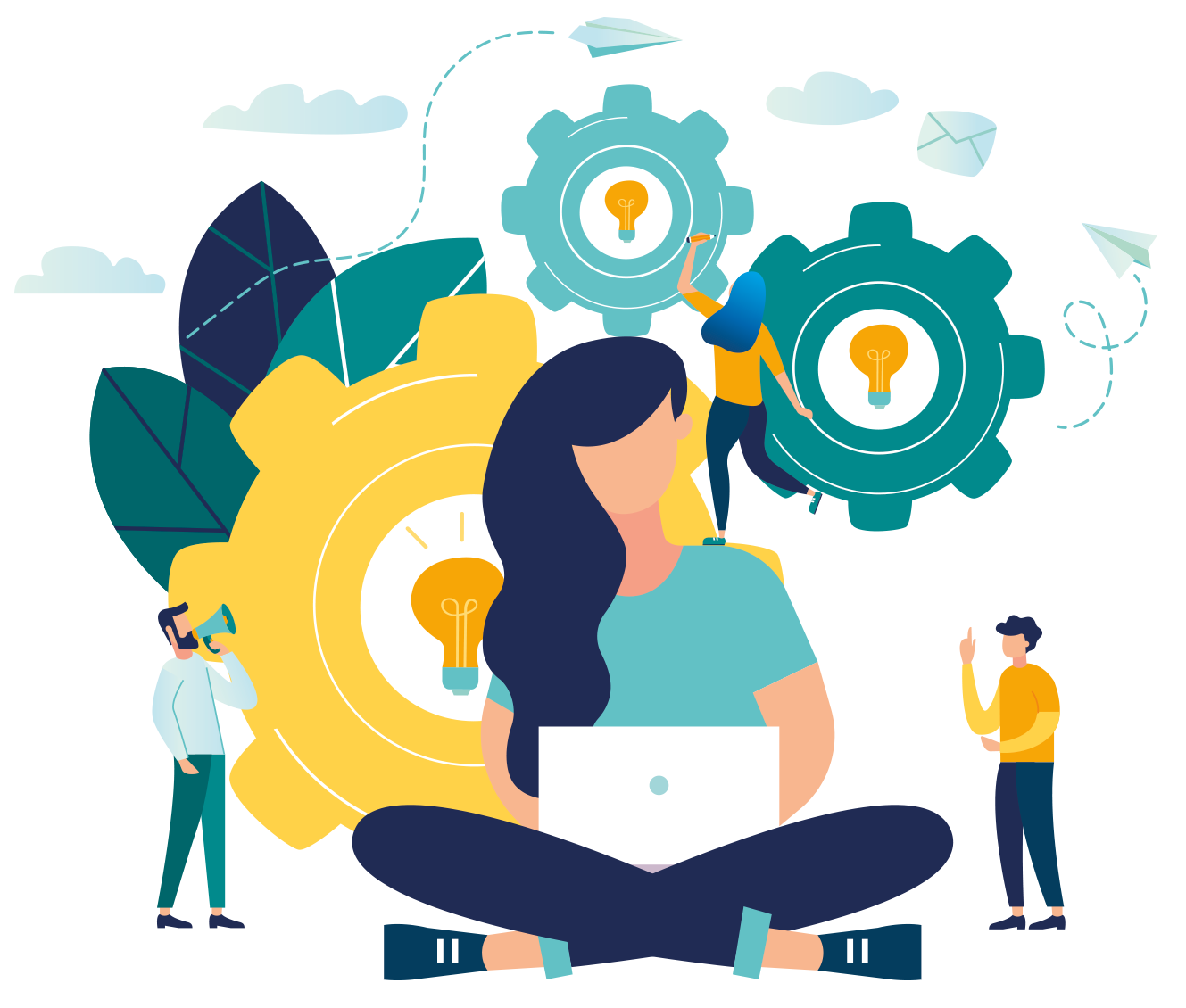
Cette polarité entre les environnements « gentils » et « méchants » est très intéressante. Y-a-t-il d'autres lectures ou expériences dont vous vous êtes inspiré ?
Le livre Range. Why generalists triumph in a specialized world de D. Epstein est sans aucun doute lié au sujet précédent sur les personnes généralistes. Le généraliste n'est pas polyvalent. Pour créer des connexions pertinentes, il ne faut pas être bloqué sur une spécialisation. C’est un état d'esprit. L'expert doit être un facilitateur, rechercher un langage commun et développer les connaissances du groupe. Le monde des grands experts qui se font parfois même concurrence n'est pas un monde kind. Le généraliste a plus sa place dans la société d'aujourd'hui parce que la nature nuisible des problèmes du monde moderne nécessite une expérience et une connaissance des éléments de connexion de différents domaines pour trouver des solutions innovantes. C'est un thème qui m'a beaucoup frappé. Parmi mes outils j'utilise une matrice qui rassemble des environnements gentils ou méchants d'un côté et des généralistes ou des experts de l'autre. Cela m'aide à comprendre le point de départ de l'organisation pour aborder l'innovation (cf. schéma).
Une autre source d'inspiration, toujours japonaise, est un peu opposée à Toyota, est celle d’Honda qui organise des moments de créativité au cours desquels un senior s’enferme dans une salle avec des jeunes pour résoudre un problème, voire générer des idées. L’excellent livre « Driving Honda » les mentionne. Il s’agit des Waigaya, à cause du bruit généré par le nombre de personnes qui se parlent de façon animée dans un flux générateur d'idées. La hiérarchie se trouve à l’extérieur.
Dupont, une société hiérarchisée y avait également recours : la phase de création incluait ces « bulles créatives » dont vous parlez et dans lesquelles la hiérarchie était laissée de côté, au point que Gore, en créant Gore-tex, a décidé que ce soit une caractéristique de l'entreprise.
Oui, c’est vrai. Je peux aussi nommer Sathya Nadella, PDG de Microsoft. Il utilise la gentillesse pour changer la société de l'intérieur, après Steeve Balmer qui jouait sur le plan de de la compétition et de l’affrontement. Dès son arrivée, Nadella a offert les livres de Marshall Rosenberg sur la Communication Non Violente aux premiers échelons, avant de se lancer dans la mise en place du Microsoft du futur. Notons que Nadella est un oriental d'origine indienne. Cette approche différente qui vient de l'Orient revient, mais les idées d'innovation viennent aussi d'Afrique, d'Amérique du Sud. Tous ces éléments sont en quelque sorte des environnements Kind. Les innovateurs recherchent également des expériences inspirantes.

La KINDNESS est donc le « fil rouge » de votre conception de l'innovation dans le sens où elle favorise l'inclusion, pour une plus grande richesse et une portée transformatrice de l'innovation. Mais existe-t-il une limite à votre en entreprise ?
Je crois que dans un contexte commercial, il est important de distinguer les choses. Le cas Netflix est illustrant. D’un côté il y a les ressources opérationnelles, de l’autre les ressources créatives. Dans le contexte opérationnel, les choses doivent être faites d'une certaine manière. Il n'y a pas besoin d'une grande tolérance à l'ambiguïté. L'entreprise qui utilise la spécialisation en la matière est Kind car elle ne met pas les collaborateurs en difficulté avec de nouveaux problèmes. Il est essentiel de comprendre l'environnement et les personnes pour éviter qu'elles ne souffrent. Chez Netflix, on sait que tout le monde n’est pas prêt à être proactif. C’est donc correct de demander. Il est parfois difficile de mettre tout le monde sur le même bateau et ça peut en devenir même contre-productif. Il arrive qu’on me demande ce qu’est être un leader gentil, mais c’est difficile de gérer la gentillesse dans l'entreprise car elle peut avoir des connotations négatives notamment quand elle évoque l’ennui ou la faiblesse. Ainsi, la diffusion de la KINDNESS dans l'entreprise devrait conduire à un changement de paradigme de « Mors tua vita mea » à «Vita mea vita tua», la version latine courtoise de Win-win.
Vous êtes Italien et vous vivez à Londres. L'interculturalité est un autre aspect de votre travail que nous souhaitons souligner puisque KindnessForBusiness est marqué par sa réalité interculturelle. Avez-vous perçu différentes significations de la KINDNESS entre l'Italie et Londres ?
La Covid met à l’épreuve les personnes dans un monde ambigu et discontinu. Cette année, de nombreuses initiatives - entreprises et associations- liées à la Kindness ont vu le jour. Ce n'est pas un hasard. Les gens comprennent que la gentillesse est nécessaire pour faire sérieusement face à une situation complexe. Je perçois des différences culturelles mais il est encore tôt pour m'exprimer. Je dirais…«Work in progress» mais une chose est certaine : en entreprise on peut choisir ; la Covid ne permet pas de choisir.
Pour conclure, nous vous proposons de choisir deux cartes dans le jeu d'une cinquantaine de cartes que nous avons créé pour représenter le Kindness Universe d'une organisation. Nous vous proposons de choisir celle qui vous parle le plus et celle qui vous surprend.
De toutes les cartes que vous me proposées, je suis intrigué par la carte "Abondance". Je la trouve intéressante même si en matière d'innovation il est parfois plus efficace d'avoir un cadre pour développer la créativité.
Mais en y réfléchissant, celle dans laquelle je me retrouve le plus est la carte "Authenticité" car je l’associe aussi au fait d’être gentil avec soi-même, ne pas porter de masque. Je la relie au bonheur et au sentiment d'utilité, tous les aspects de la Kindness en somme.
L'AUTEUR

Alessio CUCCU est : Chief Kindness Officer | Full time curious | natural carrier of kindness | inspired by inspiring #KINDINNOVATION.

